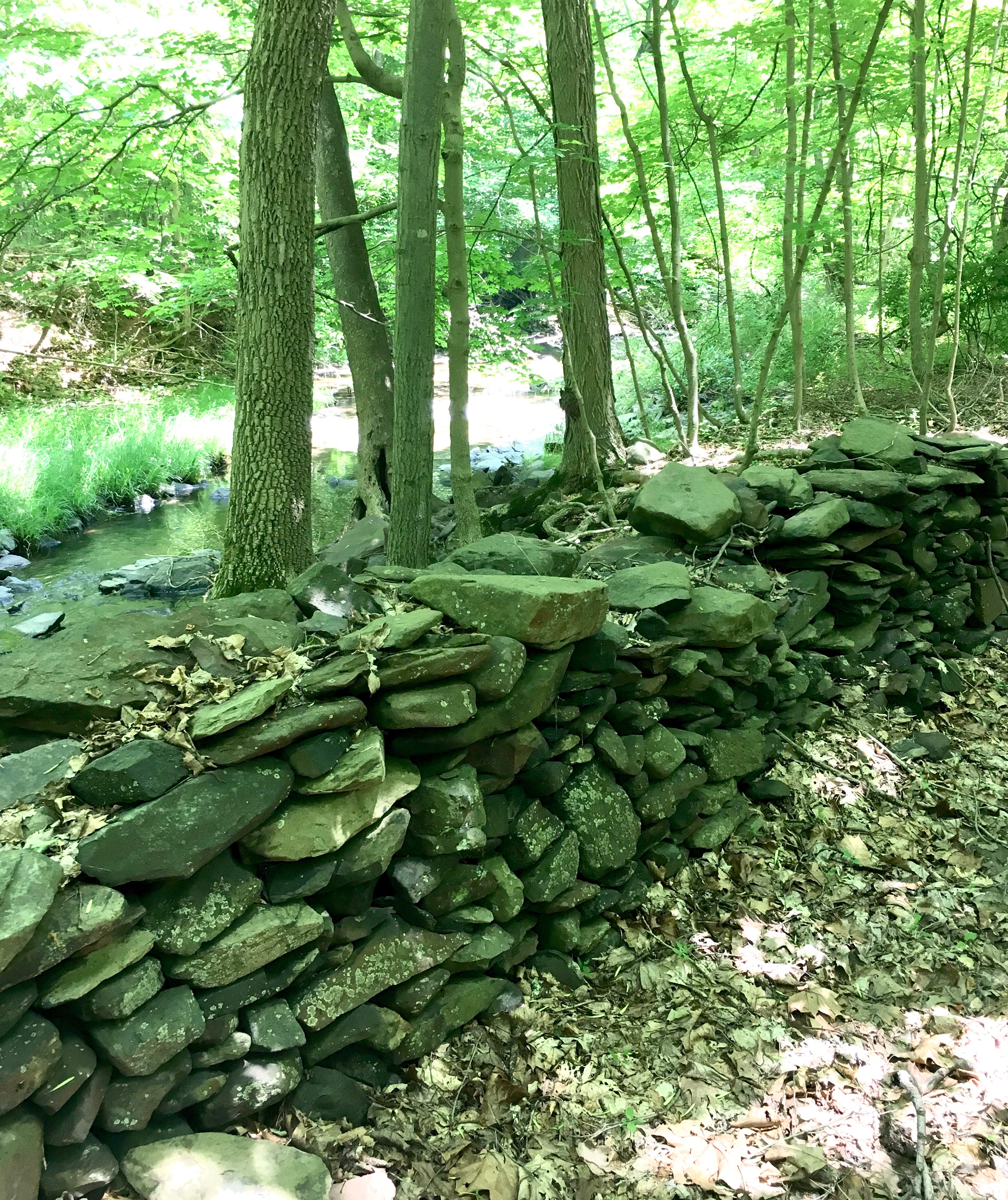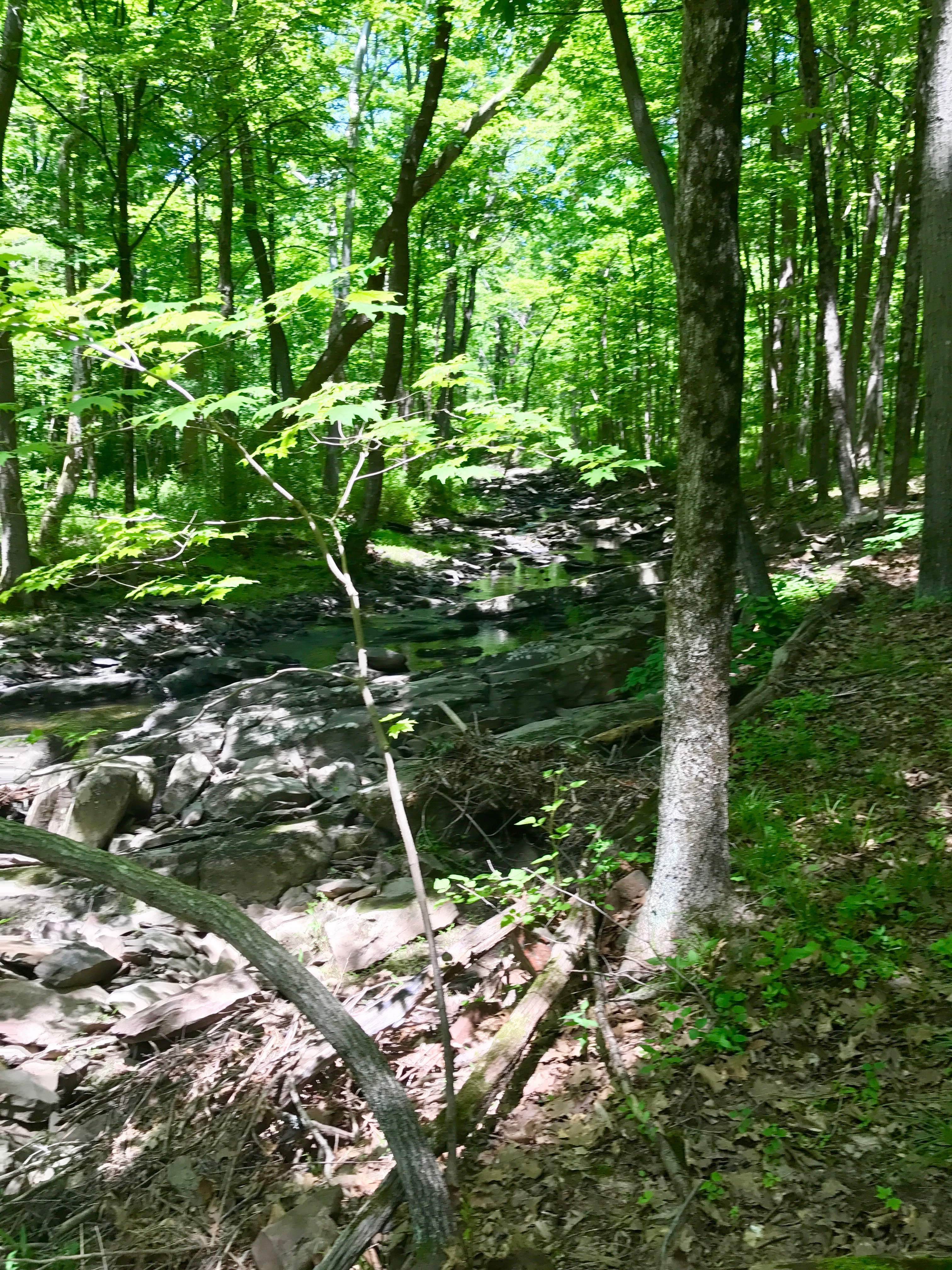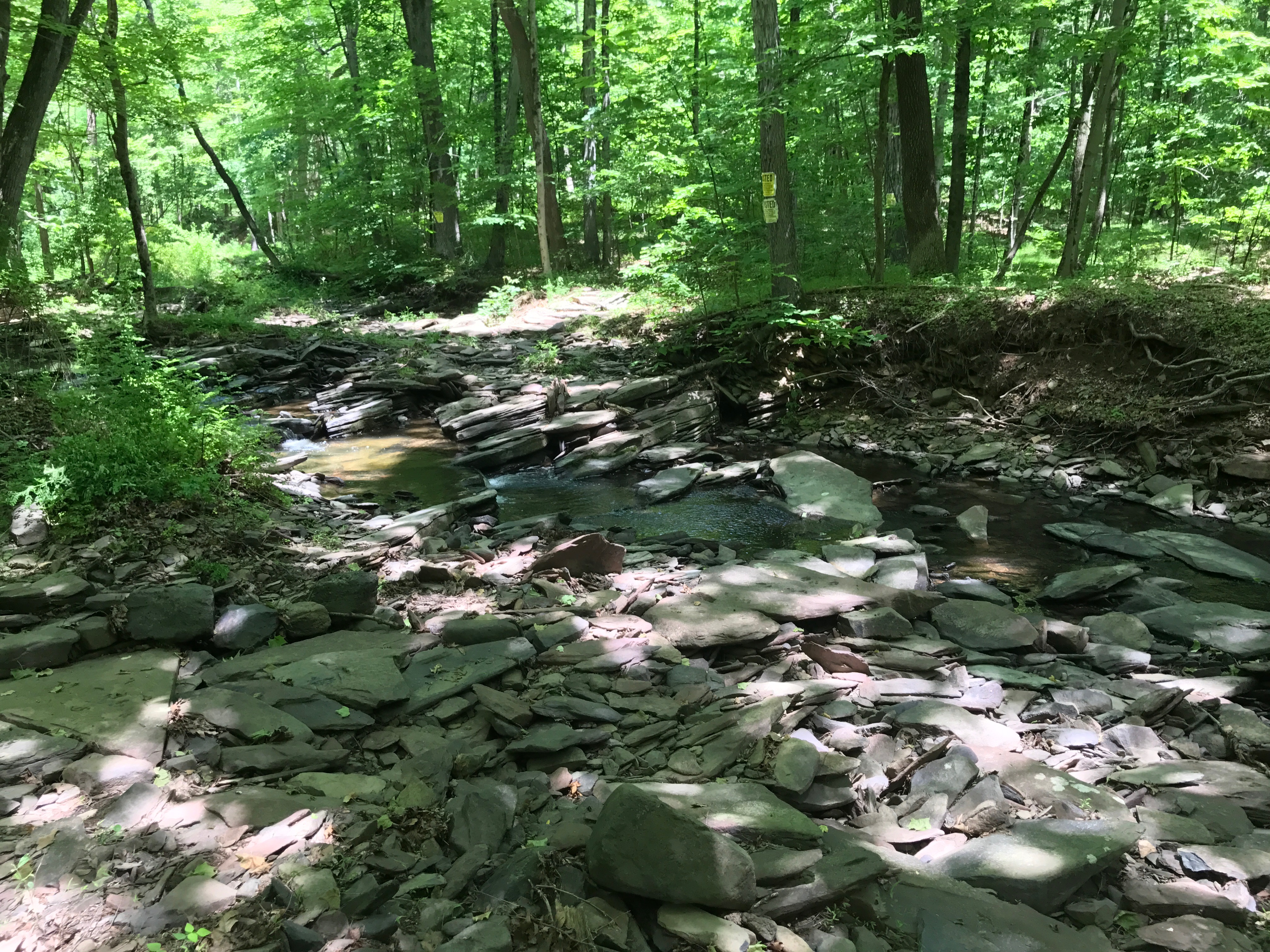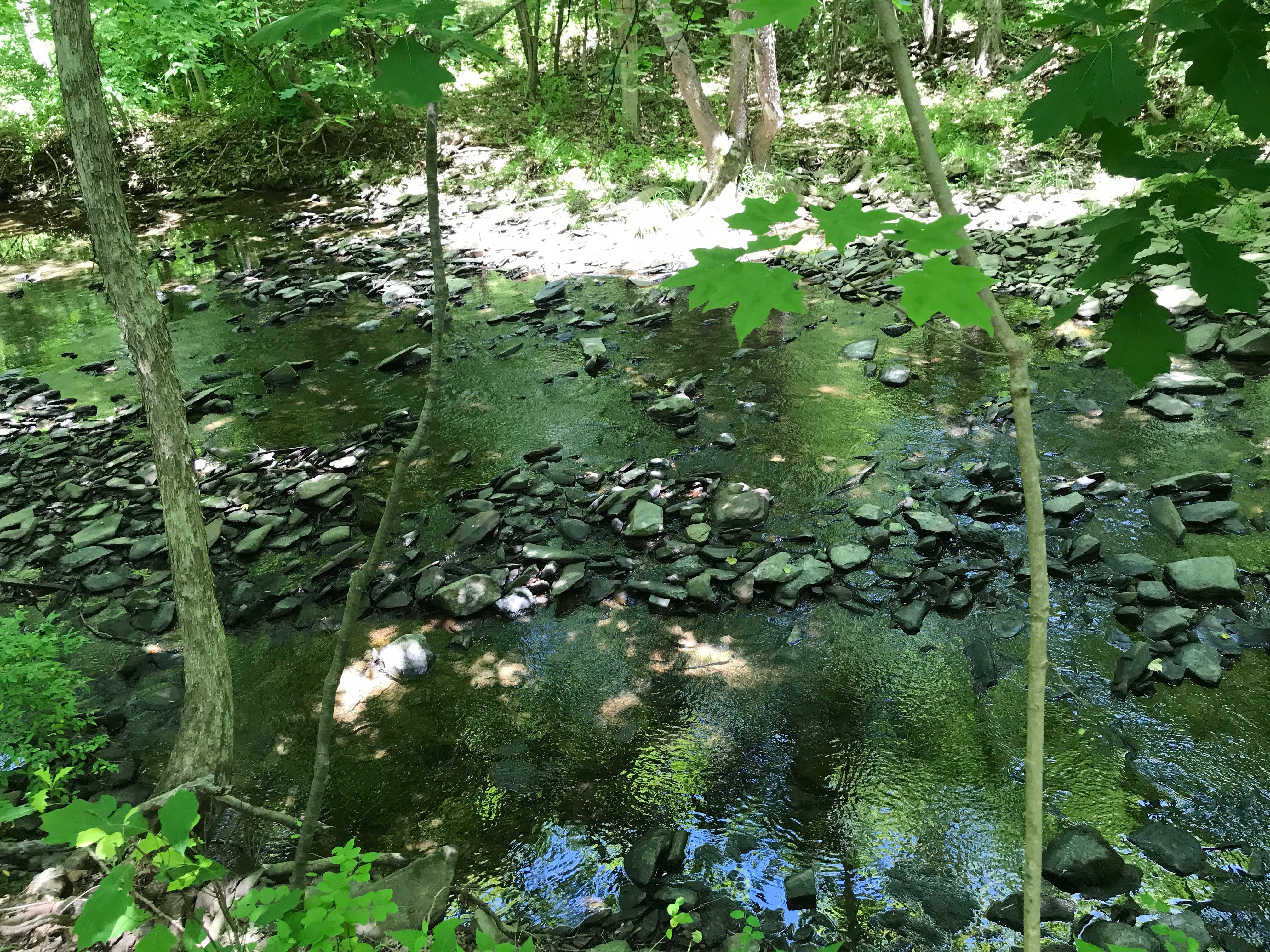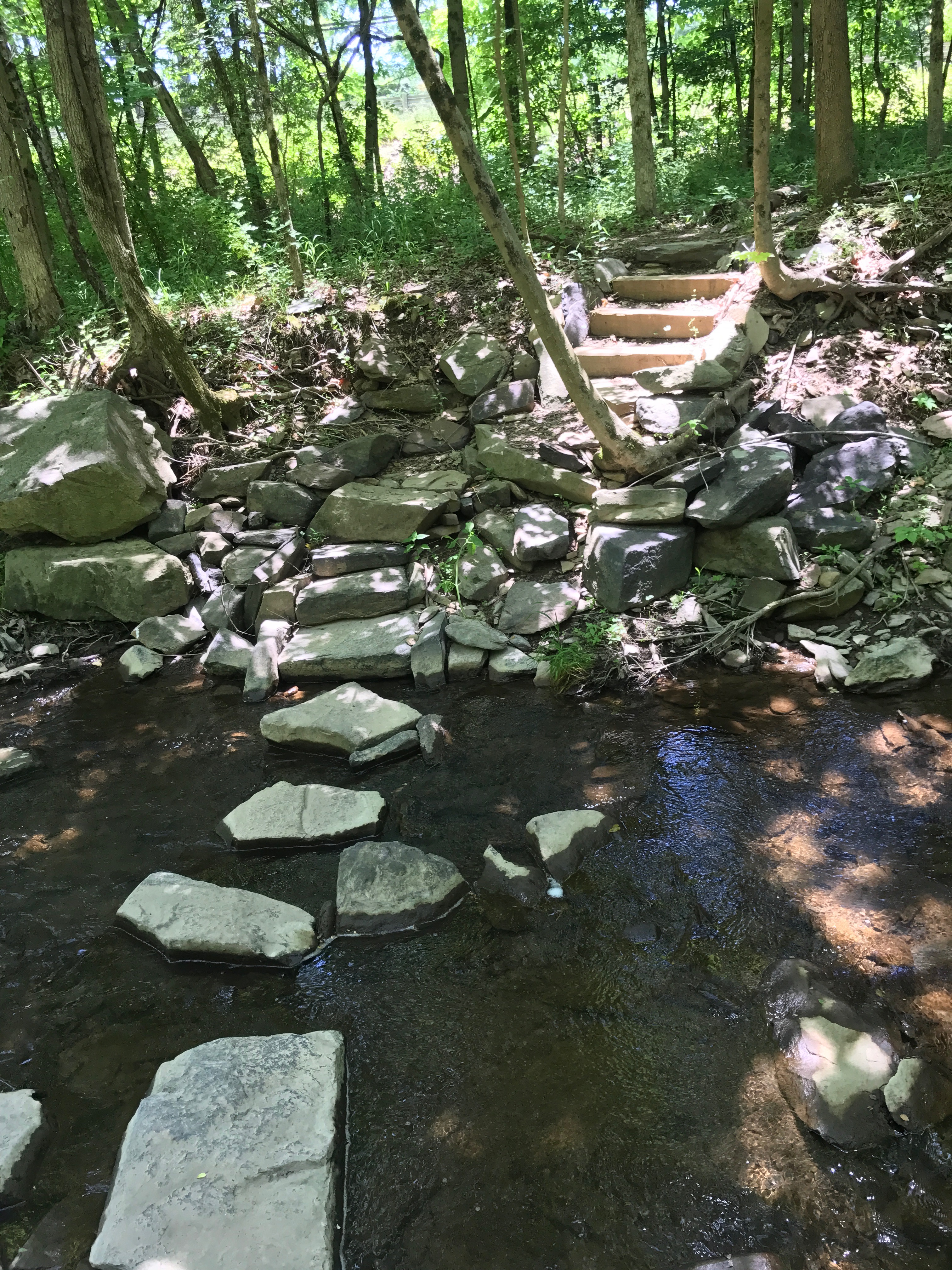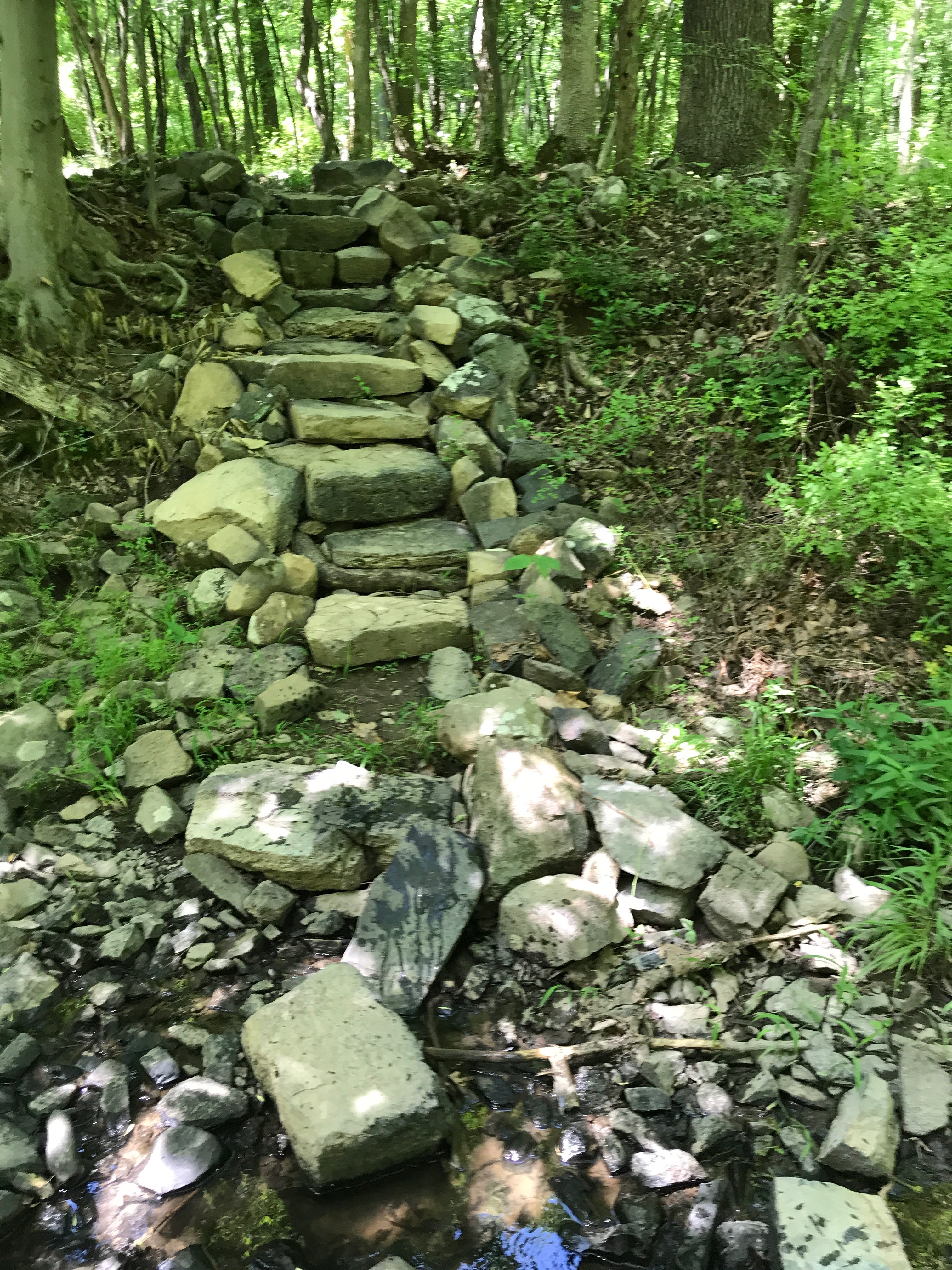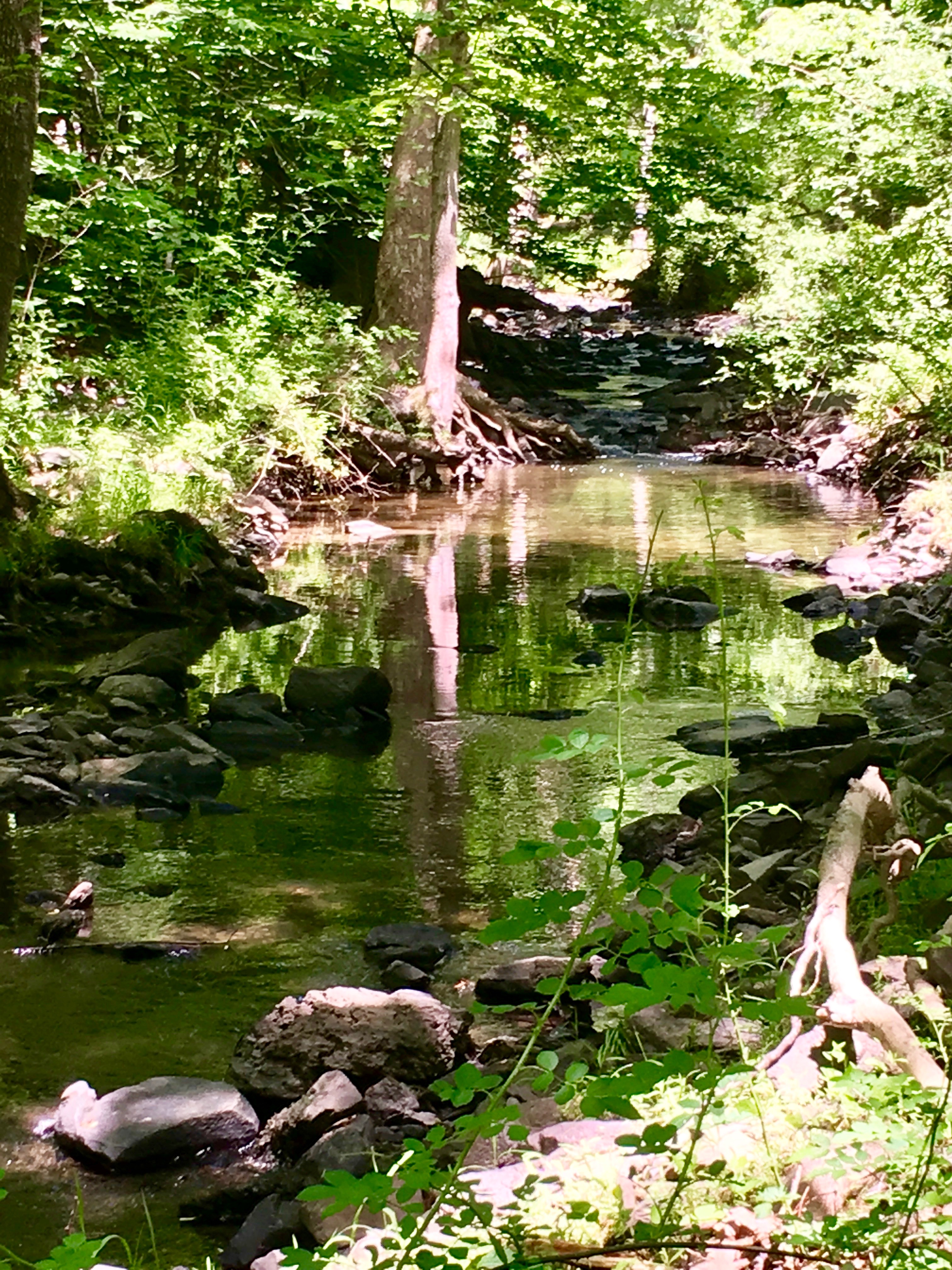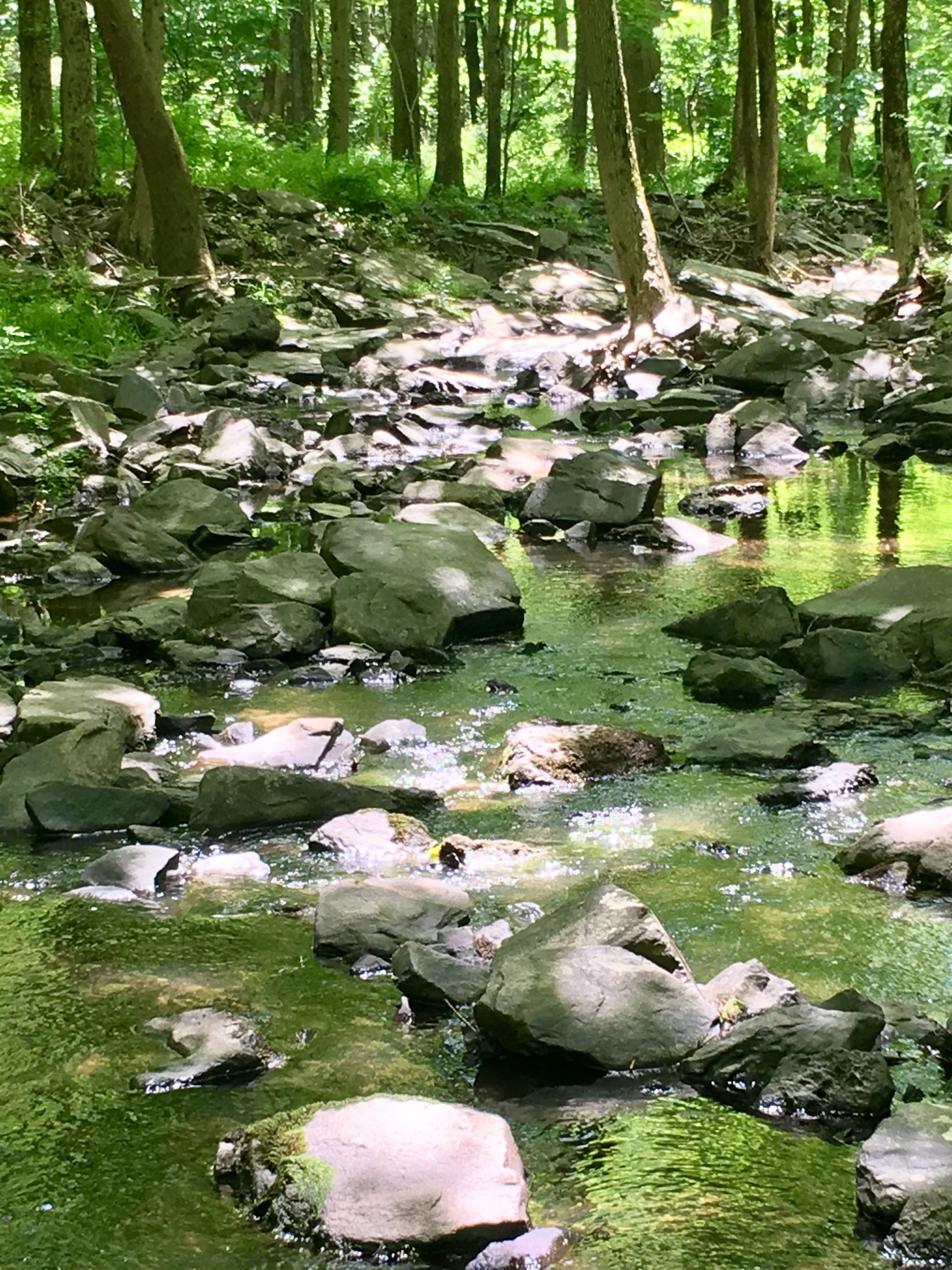Hunterdon
East Amwell
Rocky Brook Trail
East Amwell, NJ 08525


Last Updated: 05/21/2020
Overview of Selected Trail
The 1.3-mile Rocky Brook trail follows a stone-studded tributary of Stony Brook on the wooded southern flank of the Sourland Mountain Ridge, sometimes right by the stream and sometimes high above it.
-
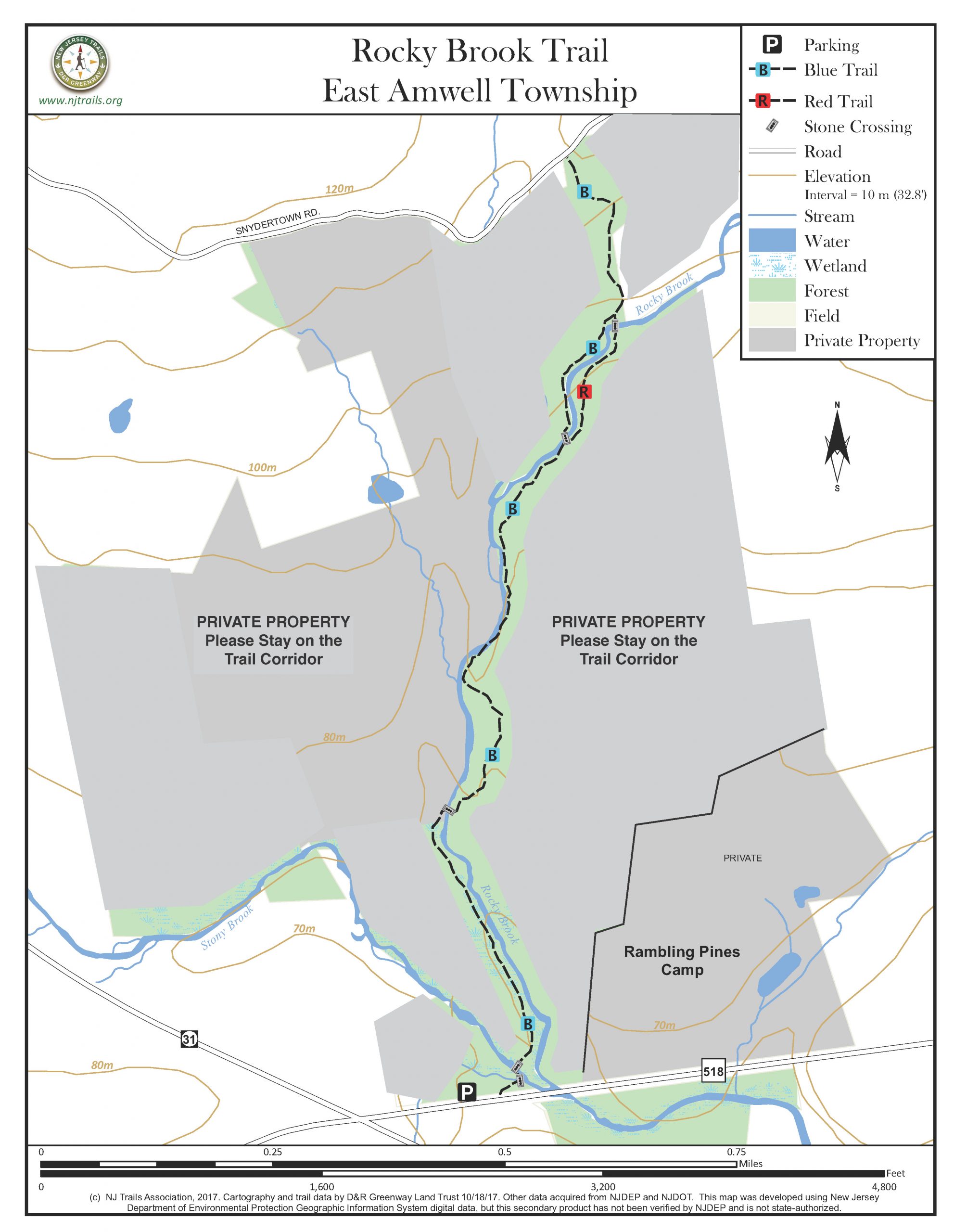
-
Distance:
Total of 1.6 miles of trail (2.8 Miles roundtrip)
Time:
A leisurely round-trip walk up from Route 518 to Snydertown Road and back could take an hour and a half.
Markings:
The main trail has blue blazes. The optional loop, running along the east bank of Rocky Brook near the north end of the trail, is marked with red blazes.
Trail Usage:
This is a walking/hiking trail. No ATVs, bikes, other wheeled vehicles, or horses are permitted. It is not designed for equestrian use. Dogs must be kept on leash for the benefit of wildlife and fellow hikers. Hunting is permitted on the easement property outside the trail corridor. For safety, avoid hiking during the firearm deer season, or wear orange or yellow safety vests.
Please stay on the marked trail corridor and do not venture into private property as indicated on the trail map.
Elevation:
Minimum near southern trail head is 202’, maximum at Snydertown Rd. is 392’
Difficulty:
Moderate. Walking sticks are useful for secure balance in negotiating the stream crossings.
Parking:
There is room for about six cars in a graveled shoulder pull-off on the north side of Route 518 at the southern trail head, about .3 miles east of Route 31 (just west of the guard rail marking the bridge on Route 518 over Stony Brook).
Tips:
There are six stream crossings, all constructed by placement of stepping stones. In times of high water, stones may be dislodged or become unstable. Always use caution at these crossings. If stones are wet, they may be slippery, and if a stone is submerged, the current may affect your ability to step accurately on it. Use a walking stick for added balance. If in doubt about your ability to cross safely, turn back.
Amenities:
None.
Directions:
From the Pennington Circle, continue north on Route 31 for 6 miles, turn right (east) on Route 518, and carefully pull over to parking pull-off on the left (north side), just before the guardrails that line the bridge over the Stony Brook. From Hopewell, go west on Route 518 for 2.6 miles to the pull-off parking on the right. From the intersection of Route 31 and Route 202 at Ringoes, go south on Route 31 for 4 miles, and turn left (east) on Route 518 and find the parking pull-off on the left.
If using Google Maps, set the address at Rte. 518 & Rte. 31, Hopewell, NJ. The trailhead is .15 miles east of the intersection on the north side of the road marked by a blue blaze. The trail proceeds into East Amwell.
-
The Rocky Brook Trail runs about 1.3 miles from Route 518 to Snydertown Road in East Amwell, mostly following a tributary of the Stony Brook called Rocky Brook. It provides intimate views of perhaps the most charming segment of the Stony Brook system, with massive stone slabs lining the brook, small waterfalls and pools, and views of the stream from its banks and from high rises above the stream. Near its northern end, the trail offers two options, along the west and east sides of the Rocky Brook, joined at both ends with brook crossings to form a loop, so the total trail length is about 1.6 miles. The trail follows a public access corridor within a larger conservation easement that the New Jersey Department of Environmental Protection obtained in 2002, and is overseen by the management of Washington Crossing State Park. East Amwell Township is responsible for maintaining the trail.
Please stay on the marked trail corridor and do not venture into private property as indicated on the trail map.
-
Rocky Brook trail passes through forest typical of the Sourland Mountain region’s northern hardwoods. Generally the forest is now considered “middle-aged,” reflecting the past—but not recent—use of the area for farming within the past 100 years, but there are many large mature many of the trees along the trail; they were spared because of their proximity to the stream and the wetlands and ravines associated with it. Species along the southern, lower part of the trail include beech, sycamore, and hornbeam. Higher up are maple, oak, ash, tulip, and hickory. A short segment traverses a patch of large Norway spruce, the remnants of a Christmas tree farm.
The trail is particularly beautiful in early spring when ephemeral flowers such as bloodroot and trout lilies are in bloom. There are a variety of ferns to be seen.
Birding is popular and rewarding in the Sourlands Region, which includes the Rocky Brook Trail. The Sourland forest is an important stopover site for migrating birds, and the large contiguous area of mature trees allow year-round residents such as the Hairy and Pileated Woodpeckers to thrive. Many migratory species nest in the Sourlands, including wood thrush, ovenbird, veery, black-billed and yellow-billed cuckoos, broad-winged and red-shouldered hawks and a large variety of neotropical warblers. Many of these birds are Species of Concern in NJ due to habitat loss elsewhere in the state. During a spring hike at Rocky Brook you might spot a brilliant Scarlet Tanager in the canopy, or see and hear Louisiana Waterthrush, a rarely-seen bird that will only breed near forest streams with clean unpolluted water.
The Sourlands are also home to other wildlife species of special interest and concern such as Eastern Box Turtle and the seldom-seen Eastern Spotted salamander. The stream attracts amphibians and the usual mammals ranging from mice and voles to the over-abundant whitetail deer.
Do you have information about this trail?
Click Here to contribute.
-
The banks and vicinity of Rocky Brook were populated and used from Revolutionary Times. Along the eastern bank of Rocky Brook are visible remnants of a mill dam, identified on an 1852 map as a grist mill owned by “A. Snook,” and the 1850 census enumeration sheet lists Alexander Snook with a household of five. The 1852 map similarly identifies a saw mill on the main Stony Brook, owned by a “W. Phillips.” A walk along this trail also reveals old stone walls running both parallel and perpendicular to the course of the stream, defining property or field boundaries from earlier times.
Do you have information about this trail?
Click Here to contribute.
-
Photos
Videos

